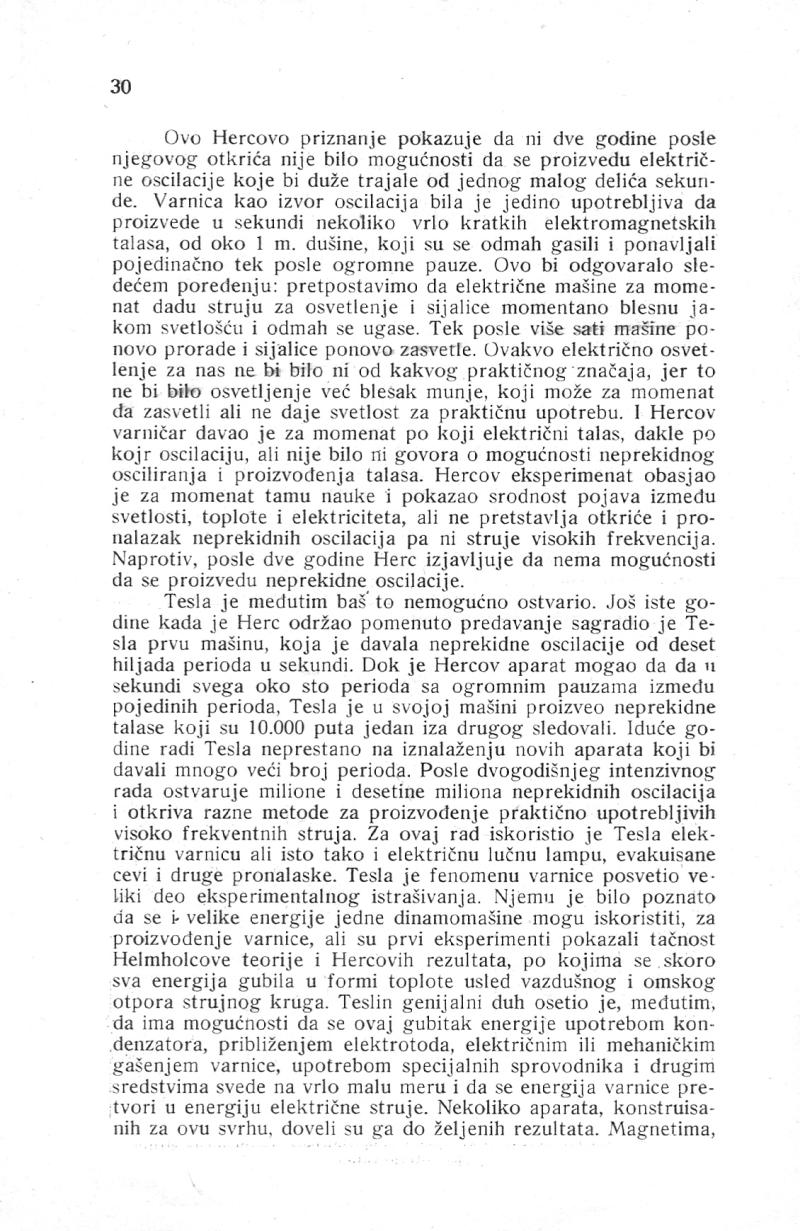
Nikola Tesla Books
This confession by Hertz shows that even two years after his discovery, it was not possible to produce electric oscillations that would last longer than one small fraction of a second. The spark as a source of oscillations was only usable to produce several very short electromagnetic waves of about 1 meter in length, which were immediately extinguished and repeated individually only after a huge pause. This would correspond to the following comparison: suppose that electric machines for a moment provide current for lighting and light bulbs momentarily flash with a bright light and immediately go out. Only after several hours did the machines start working again and the bulbs light up again. This kind of electric lighting would not be of any practical importance for us, because it would not be lighting but a flash of lightning, which can illuminate for a moment but does not provide light for practical use. And Hertzâs spark gap gave for a moment an electric wave, that is, an oscillation, but there was no question of the possibility of continuous oscillation and wave production. Hertzâs experiment illuminated the darkness of science for a moment and showed the kinship of phenomena between light, heat and electricity, but it does not represent the discovery and discovery of continuous oscillations or high-frequency currents. On the contrary, after two years, Hertz declares that it is not possible to produce continuous oscillations.
Tesla, however, did the impossible. In the same year that Hertz gave the aforementioned lecture, Tesla built the first machine, which produced continuous oscillations of ten thousand periods per second. While Hertzâs machine could only produce about one hundred oscillations in a second with huge pauses between individual periods, Tesla produced continuous waves in his machine that followed each other 10,000 times. Next year, Tesla was constantly working on inventing new devices that would give a much larger number of periods. After two years of intensive work, he achieved millions and tens of millions of continuous oscillations and discovered various methods for producing practically usable high-frequency currents. For this work, Tesla used an electric spark but also an electric arc lamp, vacuumed tubes and other inventions. Tesla devoted a large part of his experimental research to the spark phenomenon. He knew that the great energy of a dynamo could be used to produce a spark, but the first experiments showed the accuracy of Helmholtzâs theory and Hertzâs results, according to which almost all energy was lost in the form of heat due to air and ohmic resistance of the circuit. Teslaâs genius spirit felt, however, that it is possible to reduce this loss of energy to a very small extent by using a capacitor, bringing the electrode closer, electrically or mechanically extinguishing the spark, using special conductors and other means, and to convert the energy of the spark into energy of electric current. Several devices, constructed for this purpose, led him to the desired results. With magnets,
